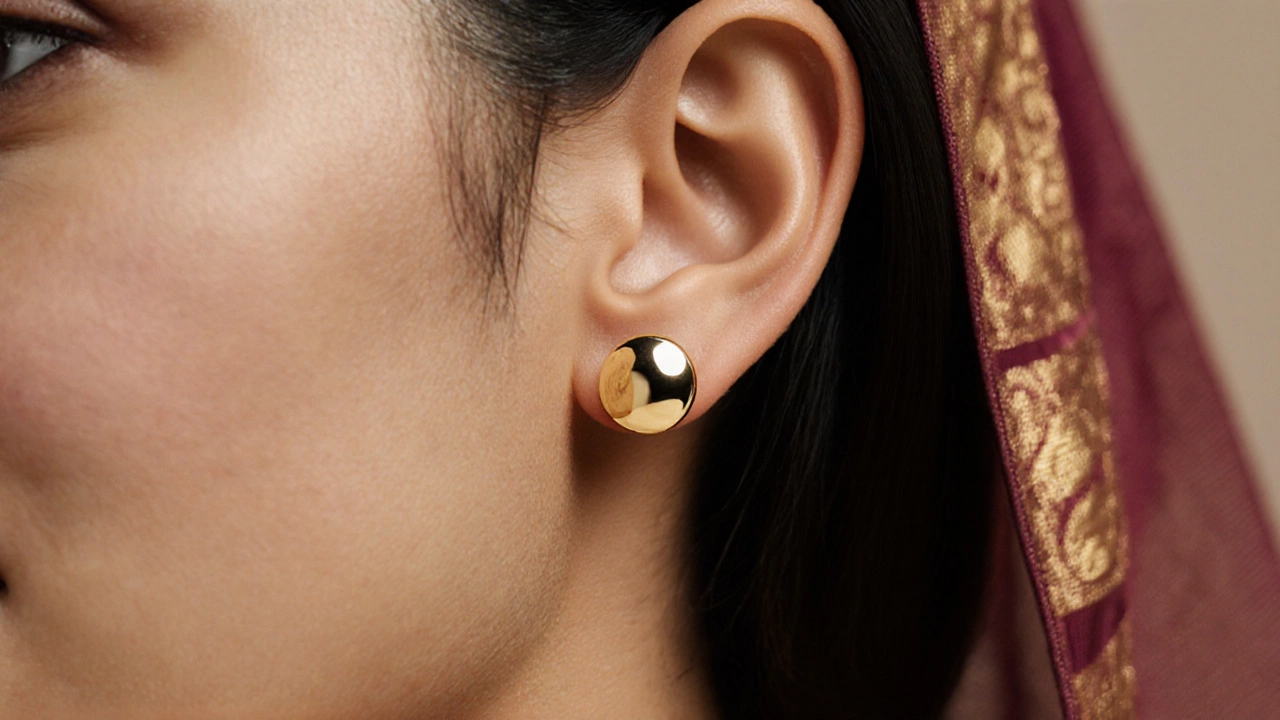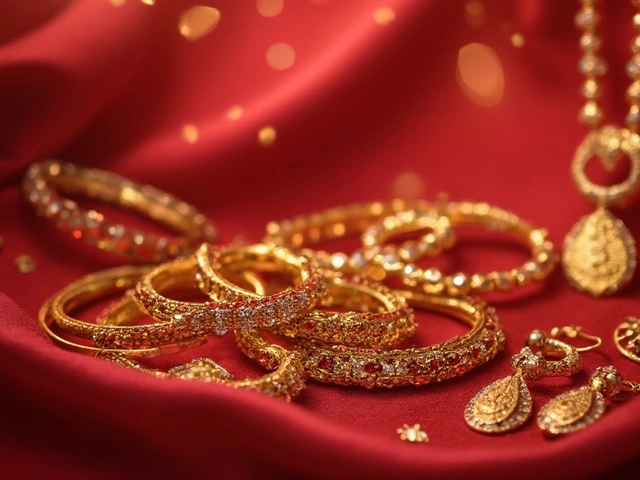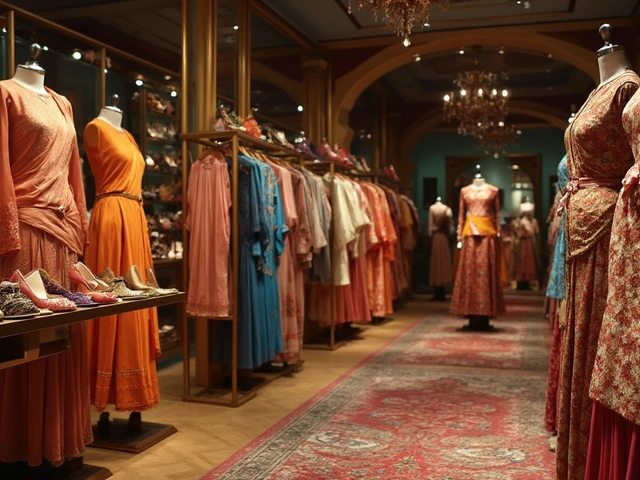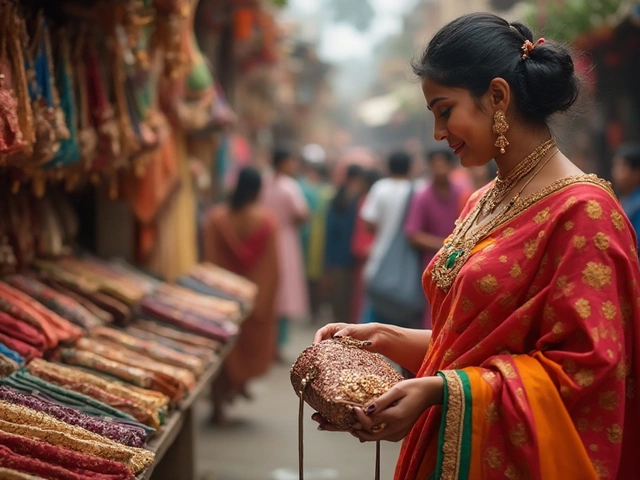Stud Pattern Comparison Tool
Round (Classic)
58%The most widely used pattern in Indian gold jewelry
Bar
12%Modern minimalist look
Teardrop
15%Bridal sets and festive occasions
Filigree
10%Heritage pieces and temple adornments
Leaf/Floral
5%Boho-chic and ethnic fusion styles
Select a pattern to see details
Click on any pattern above to view its specifications
Daily Wear
The classic round stud is the safest choice for everyday wear due to its versatility and comfort.
Special Occasions
Consider teardrop or filigree studs for weddings and festivals to add a touch of elegance.
Key Takeaways
- The round‑face or "classic" stud is the most widely used pattern in Indian gold jewelry.
- Its popularity stems from simplicity, ease of wear, and versatility across earring types.
- Other frequent patterns include bar, teardrop, and filigree studs, each serving a specific style niche.
- Knowing the hallmark features helps you spot genuine pieces and avoid cheap imitations.
- Proper cleaning and storage extend the life of any stud‑pattern piece.
When you glance at a gold earring, the stud pattern is the decorative arrangement on the front face of a small earring back that instantly tells you its style, era, and even the wearer’s regional taste. In Indian gold jewelry, the round‑face or "classic" stud reigns supreme, showing up in everything from everyday jhumkas to temple ornaments.
Understanding Stud Patterns
A stud pattern refers to the visual motif carved, filigreed, or set onto the visible part of a stud earring. Patterns can be geometric (round, square, bar), organic (teardrop, leaf), or intricate (filigree, meenakari). The choice influences how light reflects off the gold, how the piece pairs with outfits, and how it resonates with cultural symbolism.
Why the Classic Round‑Face Stud Dominates
The classic round‑face stud-sometimes called a "circular" or "plain" stud-covers the largest share of the market for three practical reasons:
- Versatility: A simple circle complements any face shape and pairs well with necklaces, bangles, or a mangalsutra.
- Craftsmanship ease: Goldsmiths can achieve a perfect circle with traditional hand‑raising or modern CNC tools, reducing labor time and cost.
- Durability: The uniform shape distributes weight evenly, making it less prone to bending or breaking.
Because of these advantages, the round stud appears in the majority of designs listed by major Indian jewelry houses, from classic Kundan to contemporary minimalist collections.
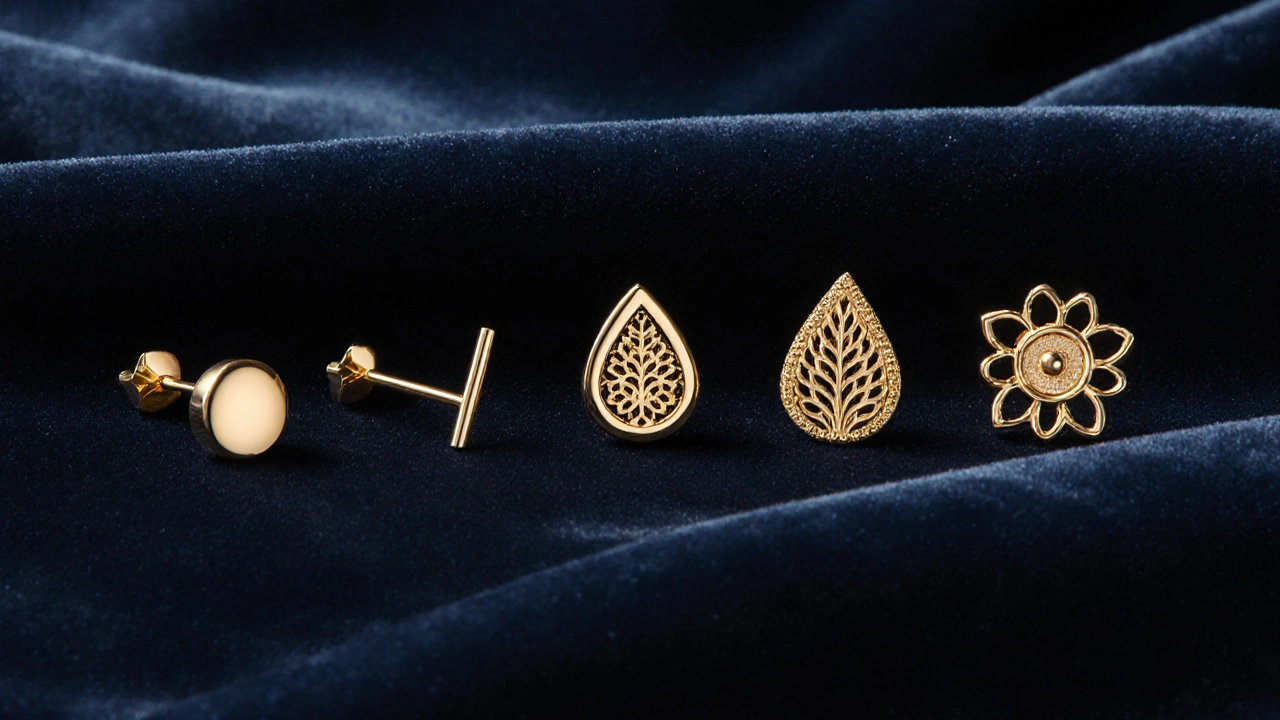
Other Popular Stud Patterns and Their Uses
| Pattern | Typical Use | Popularity (%) | Weight Avg (grams) | Best Pairing |
|---|---|---|---|---|
| Round (Classic) | Everyday wear, temple jewelry | 58 | 1.2‑2.0 | Simple chains, traditional outfits |
| Bar | Modern minimalist looks | 12 | 1.0‑1.5 | Geometric necklaces |
| Teardrop | Bridal sets, festive occasions | 15 | 1.3‑2.2 | Heavy necklaces, elaborate sarees |
| Filigree | Heritage pieces, temple adornments | 10 | 0.8‑1.4 | Traditional silk, chandni |
| Leaf/Floral | Boho‑chic, ethnic fusion | 5 | 1.1‑1.8 | Flowy dresses, casual wear |
While the classic round still holds the biggest slice, each of these alternatives serves a niche. For instance, bar studs are favored by designers who want a sleek, linear feel, whereas teardrop studs add a graceful drop that mirrors the traditional Indian elegance of a mangalsutra.
Spotting Authentic Common Studs
Knowing the hallmark traits of a genuine classic stud can save you from costly fakes. Look for these cues:
- Hallmark indicating 22K or 24K purity-usually a small punched mark on the back.
- Uniform curvature with no visible seams; a hand‑raised classic will have a seamless silhouette.
- Weight consistency: a 1.5‑gram round stud feels solid yet light; significant deviation often signals hollow‑core plating.
- Polish quality: authentic gold reflects a warm, even sheen without a rainbow “rainbow” effect that cheap alloys produce.
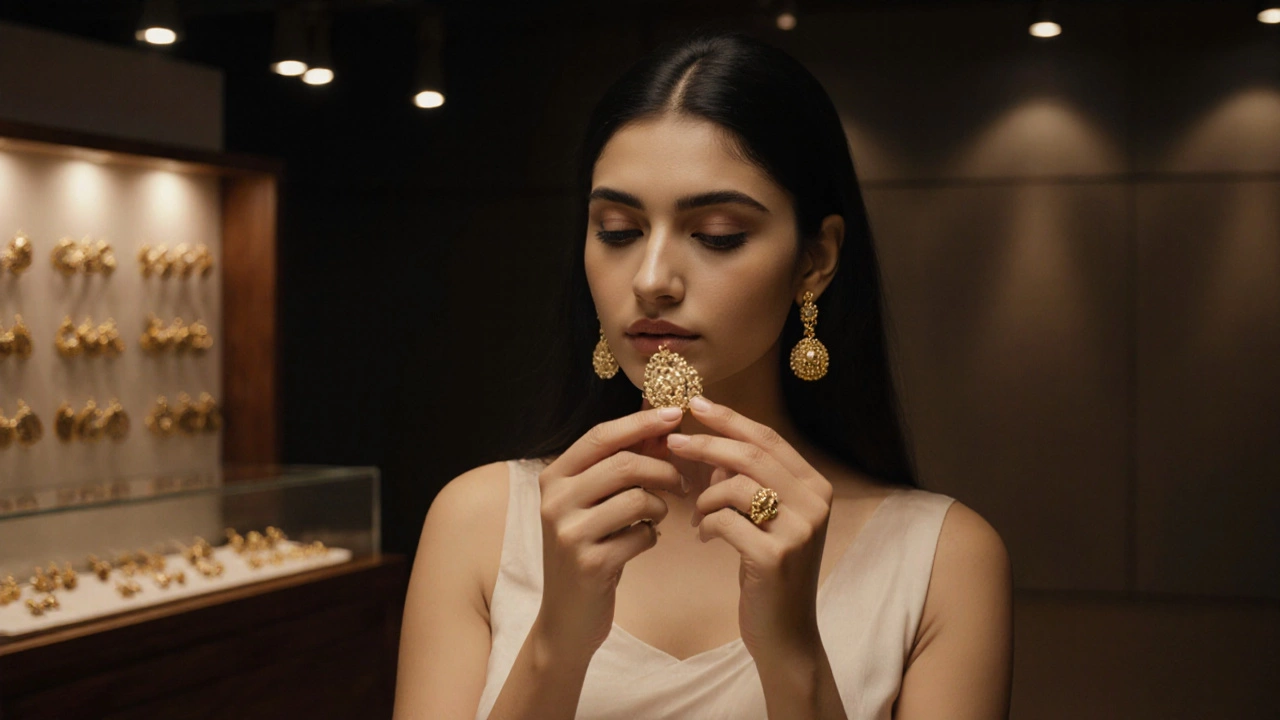
Care Tips for Your Common Stud Pieces
Even the simplest stud deserves proper upkeep. Follow these steps to keep it shining:
- Wipe after each wear with a soft, lint‑free cloth to remove oils.
- Occasionally soak in warm water mixed with a few drops of mild dish soap; scrub gently with a soft toothbrush.
- Avoid exposure to chlorine or harsh chemicals-these can erode the gold surface over time.
- Store in a separate compartment of a jewelry box, preferably lined with anti‑tarnish fabric, to prevent scratching against heavier pieces.
- Schedule a professional polishing every 12‑18 months to restore the original luster.
Choosing the Right Stud Pattern for Your Style
If you’re shopping for a new pair, ask yourself:
- Do I need something that works daily? → Classic round.
- Am I looking for a statement piece for a wedding? → Teardrop or filigree.
- Do I prefer modern minimalism? → Bar or simple geometric.
Most Indian jewelers will automatically suggest the classic round when you mention "gold stud earrings" because that’s the safest bet for both comfort and cultural acceptance.
Frequently Asked Questions
Which stud pattern is considered most traditional in Indian gold jewelry?
The classic round‑face stud is the most traditional, appearing in everything from everyday jhumkas to temple ornaments.
How can I differentiate a real gold classic stud from a gold‑plated imitation?
Check for a purity hallmark (22K/24K), feel the weight (real gold feels solid but not heavy), and examine the polish-authentic gold has a warm, even shine without a rainbow effect.
Are bar studs suitable for traditional Indian weddings?
Bar studs are more contemporary and work best for modern bridal looks or fusion ensembles, but they’re less common in classic wedding settings where round or teardrop styles dominate.
What maintenance does a filigree stud require compared to a plain round stud?
Filigree pieces have delicate openwork, so they need gentler cleaning-use a soft brush and avoid abrasive cloths. Plain rounds can tolerate a slightly more vigorous polish.
Can I wear classic round studs with a modern minimalist outfit?
Absolutely. The understated elegance of a round stud pairs well with sleek lines, making it a versatile bridge between traditional craftsmanship and contemporary style.
